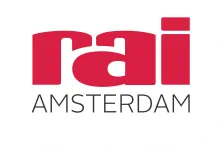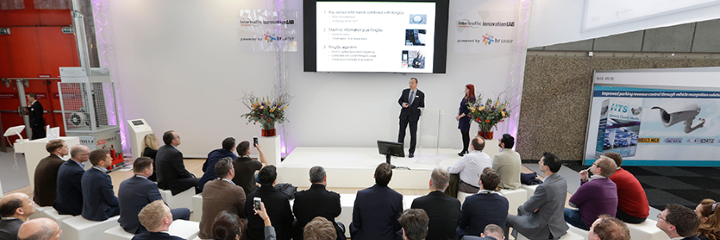Knowledge transfer and contacts are two of the key things which make events valuable, and technical developments are creating ever more opportunities in this area. As IT Consultants at the RAI, Pim Schoonderwoerd and Paul Hassink provide event organisers with advice on how to make best use of these new technologies and how to distinguish valuable applications from temporary fads.
Our role is to support organisers in utilising the best IT applications to make their events run smoothly and, more importantly, offer their visitors added value. What does this involve? How does one choose the best solutions? And which tools can be helpful in the process? Streaming, voting, lead generation, apps, E-Posters, Augmented Reality, Virtual Reality – how can you choose between all these options?
- A solid foundation is crucial
To start with, there has to be a solid foundation; a strong network and good internet connections are as self-evident as running water these days. Stability, quality and security are not options… All three must be perfect. It is especially important to discuss in advance what you hope to achieve. Good and fast networks do not add value in themselves, after all. What is your goal and which tools do you need to realise it? - Increasing online visibility
Events are merely a snapshot and the contacts and information transfer continue both before and after. The event itself is an excellent opportunity to generate a lot of interesting content and make it available via various IT applications and services; both during the event, to create additional exposure, and after, when people go over, discuss or pass on the information again. Planning in advance which information you wish to use will help you make the most of every presentation during the event.
Live streamed lectures can be recorded and edited later to create accessible videos. Or take a more professional approach and develop ‘programmes’ for relevant presentations, including previews, follow-ups and viewers’ questions. Make sure you use the knowledge and experience available at the venue. Know your goal and start in time. This will ensure that you have the required technology and staff available during the event, leaving you to stick to the script. Content collected this way significantly increases the value for your community. - Presentation management
Perfect presentations are the backbone of every successful conference. Medical or scientific conferences may see hundreds of presentations on a single day, often with complex extras such as live connections to other locations. How can you ensure everything goes smoothly, and how can technology help you do so? Most organisers have experienced the nightmare of things going wrong: presentations changed at the last minute, incompatible laptops, dead-end links or videos that won’t start.
The opposite is the dream scenario: the presentations have been uploaded, technically checked and provided with walk-in slides and break slides for maximum event branding. The video links work and the sound has been checked. To realise this, the back-end process has to be well-structured. The ideal solution involves a central system that distributes the presentations to the various locations. This type of professional setup also offers opportunities for testing presentations in advance and recording or live streaming the performance. All of the above requires a flawless network and a modern presentation management system. The value lies in their application as smooth presentations. You don’t need to know everything about bits & bytes as an organiser – just make sure you indicate what you require at the venue. - Visitor registration
Hospitality and food service exhibition Horecava attracted 65,000 visitors to RAI Amsterdam this year while the Huishoudbeurs welcomed over 220,000. The majority of these visitors arrive at the same time. In short, a flawless and fast visitor registration is crucial, as is having a point of contact at the venue who understands the importance thereof.
A key issue to take into account as an organiser is the link between your registration system and the venue. In most cases, the venue will supply the network, hardware and printers. Consider the routing, visitor numbers, timing, and peaks – and make sure that your IT professionals meet with the IT experts of the venue well in advance. Together, they can translate the functional requirements into an optimally working system that does what is needed and is not overly expensive. Also remember to make clear agreements on the service provision during the event. What is the response time of the venue in case of problems? Can they properly monitor the network and cushion peak loads? You can also go a step further by asking the venue to supply both the hardware and software. This ensures you a single point of contact, complete control and, therefore, optimal quality.
Determining the desired results
This is easy for us to say as our venue is equipped with a cast-iron network and professional systems to support conferences and exhibitions. With eleven titles organised by
the RAI itself, we also have an excellent ‘playground’ to experiment and gain more experience with each event. We are happy to share this experience with other organisers, honing in on your specific requirements. Not in terms of technology but in terms of results: what (and whom) do you wish to reach, what do you want to offer, and how can your event add value? Based on the answers to these questions our IT team will provide the technology to make it all possible.
This is the first in a series of blogs by Paul and Pim on how technology can contribute to a successful event.

